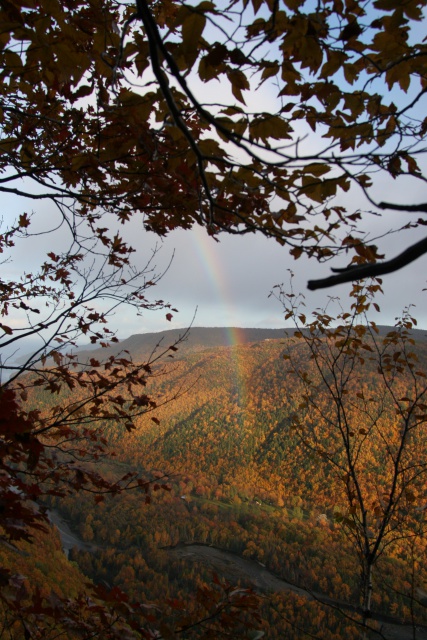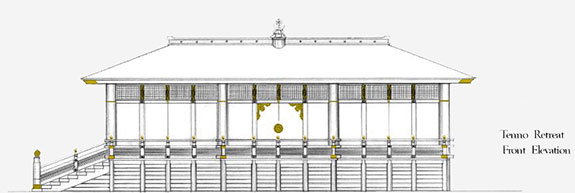Eva Wong is the 11th generation lineage carrier of the teachings of the Land Wisdom school (Shendao Kanyu), a distinct transmission of landform teachings specific to sacred architecture; a lineage carrier of the Hsüan-k’ung (Xuankong) and San-yüan (Three Periods) schools; and an advanced practitioner of the San-ho (Three Combinations) school. At the request of the Sakyong she has evaluated the landforms of Kalapa Valley.
According to Ms. Wong, Kalapa Valley’s natural land formation is both powerful and extremely rare from a geomantic point of view. The Kalapa Valley offers the potential to bring benefit as an energy source for the rest of the Shambhala mandala, much like the Isé Shrine and Koyasan in Japan.
From a feng shui perspective, the valley is seen as a living organism that can be activated by the placement of sacred architecture on the land to properly direct and regulate the energy of the valley. The concept is not dissimilar to the practice of acupuncture. Ms. Wong stresses the need to “enhance, simplify, channel, and work with the land to reveal its energy and teachings by placing sacred architecture on the power spots in the land, designating pathways to circulate the energy, and building gates to focus energy.” The park may someday include Shambhala/Buddhist and Kami shrines, Tori gates, further trails and spaces for contemplative practice.

Photo Credit – Sean Drohan
Kalapa Valley is not only unique as a significant land formation, but it is also vital in the context of the greater Shambhala mandala. The relationship between Kalapa Valley and other Centers is described in the following remarks that Ms. Wong made during her visit in September, 2000:
“Each place has to be complimentary and hooked-up. This makes the whole mandala strong. Kalapa Valley is the well that all houses draw from. The Valley Spirit is the backbone of everything that happens in the Shambhala centres. It is the primordial energy behind other centres. This part of the country is completion, powerful, deep and fruitional. We should treasure and work with this land.
Shambhala Mountain Center is more public. It is the visible display of Shambhala energy, like a sword, magnetizing and introducing new people into the dharma, whereas Kalapa Valley is an invisible display, with invisible energy which is more powerful. It has an order on the outside with chaos on the inside, which is very good. With no form or structure, there is potential for all possible manifestations.
Dorje Denma Ling is welcoming, embracing, and friendly. People here are not afraid to get into the dharma. It offers the further cultivation and deepening of dharmic development, mind cultivation. It grows on you and turns people onto the right path. The Dorje Kasung land (adjacent to Dorje Denma Ling ) is body cultivation. It is a complement to Shambhala Mountain Center.
Kalapa Valley is the energy that makes both happen. It is primordial. We should think of preserving it for the long haul…”
In an interview for the Kalapa Journal #4, by her student Gina Stick, Eva Wong said:
“Kalapa Valley is the closest you will ever get to land that gives you a direct experience of the un-manifest. If you build too much there, you’ll cover up its essence. Thus Kalapa Valley serves best as the source or generator of energy for everything else in the mandala. People can always go there for inspiration. It is one of the few places in the world I have seen of this caliber.
Think of Shambhala as a mandala, and Kalapa Valley as the sand the mandala is built on. You can’t easily see the sand, because it manifests as these other (Shambhala) centres, but without the sand, the other centres have nothing to stand on. For a large spiritual community the chaotic energy of a flood plain is invaluable as a ground because it reorganizes and renews itself every year. It is potential – the undifferentiated – coming into being.
Taoists say, “Cultivate the feminine.” Water is feminine. It’s flexible. A valley is also a feminine structure. The mountains that surround it are masculine. Behind Kalapa Valley, at the tip of this mountain formation, are two streams that join to make a single river (the Ingonish) that runs into the valley. When that flood plain changes, that’s creation. In k’an-yu (feng shui) we call it “eternal land”: it always renews itself. The Kalapa Valley is the generating and regenerating principle of the entire mandala. Without it you will be stagnant. You will not be renewed.”
Gina Stick: “The Druk Sakyong originally talked about the Kalapa Valley as the location for the capital. That was confusing because it’s not a very practical location for an administrative seat. (However) by definition a capital needs to be the cosmic pillar, the place that joins and synchronizes all the three realms of heaven, earth, and man, joining the spiritual and the temporal. If we see Kalapa Valley as our link to the highest level of drala, it actually does fulfill the Druk Sakyong’s vision of being our capital, or spiritual centre: it is the gateway to Shambhala.”
Eva Wong: “The Kalapa Valley is the furnace. The Kalapa Court is the cauldron. The Kalapa Centre (the Seat of Governance) will be the purified energy that radiates out from that cauldron. The other part of developing the capital is to develop Kalapa Valley as a sacred park with strategically placed shrines.”
MS. Stick writes: “Based on Ms. Wong’s findings, Kalapa Valley has an important role to play in both the local and international Shambhala/Buddhist mandala. First, it offers a source of exceptional power that can be of great benefit to all centres and sangha worldwide.
Secondly, it is integral to the health and well-being of the entire mandala as Kalapa Valley is the “well that all houses draw from.” Finally, in the form of a sacred park, Kalapa Valley serves as a gateway for all practitioners to experience the “energy of the guru’s mind in its primordial state.”
As a place of pilgrimage, Kalapa Valley is a pristine place in which to restore and rejuvenate one’s spirit, and ignite a spiritual journey of awakening. The Sakyong has said Kalapa Valley would be the focus of a pilgrimage circuit that could include Dorje Denma Ling, Gampo Abbey and eventually the Kalapa Centre – The Seat of Governance – in Halifax.
We are still implementing the Feng Shui adjustments recommended by Master Wong. Contributions to these can be made here – Gratitude

